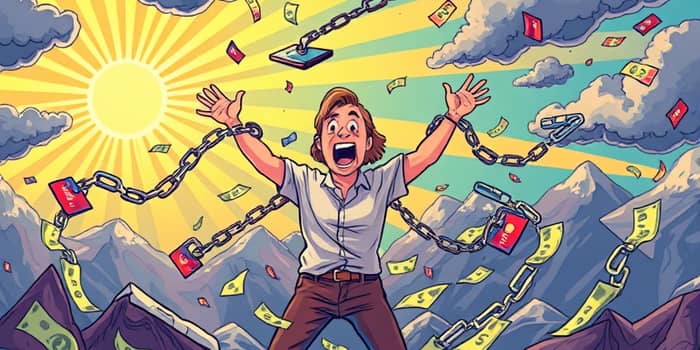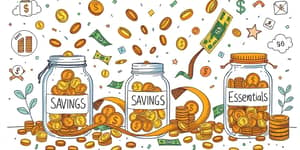
Debt touches millions of lives, yet many feel trapped by mounting balances and soaring interest. This comprehensive guide shines a light on practical steps and psychological insights to help you escape financial burdens and maintain freedom.
Debt comes in many forms—credit cards, student loans, mortgages, auto loans, and personal loans. While borrowing can fuel growth, high interest payments and fees quickly compound when left unchecked. Unmanaged debt can lead to stress, missed opportunities, and damage to credit score, affecting everything from job prospects to rental applications.
Recognizing debt as a common part of life is the first step toward empowerment. In the United States, the average household carries multiple forms of debt, yet many struggle to balance repayments with daily living expenses.
Before you can conquer debt, you must know its exact scope. Begin by creating a detailed inventory:
Tracking these figures will reveal patterns in your obligations and highlight which accounts demand urgent attention.
A robust budget is the cornerstone of any repayment journey. Start by listing all income sources and categorizing expenses into fixed (rent, utilities) and variable (groceries, entertainment). Identifying discretionary spending that can be reduced frees up cash to accelerate debt repayments.
Adopt a sustainable, realistic spending plan that aligns with your lifestyle. Track actual spending each week and adjust projections accordingly. Consistency, not perfection, will fuel long-term progress.
Two proven methods dominate the repayment landscape:
Alternatively, you might consider a Debt Management Plan through a nonprofit agency, which consolidates unsecured debts into one monthly payment and negotiates lower rates and fees on your behalf.
Supplementing your earnings can dramatically speed up repayment. Consider side gigs, freelancing, or selling unused items. Even modest extra income can chip away at balances when directed purposefully. Applying bonuses or tax refunds toward debt rather than new purchases creates significant forward momentum.
Alongside repayment, prioritize an emergency fund. Having at least three months’ living expenses in reserve prevents future reliance on credit and ensures emergency fund is essential for genuine freedom.
Debt relief is as much psychological as financial. Breaking down large balances into measurable milestones fosters a sense of achievement. Use visual trackers or apps to see progress in real time. Embrace psychological momentum and motivation by rewarding yourself for meeting targets—small treats that don’t derail your budget.
Setting SMART (Specific, Measurable, Achievable, Relevant, Time-bound) goals keeps you focused and accountable. Regularly revisit and adjust these goals, harnessing the power of proactive engagement and early intervention to prevent setbacks from derailing your plan.
Once you clear your debts, the real work begins. Maintaining financial discipline is critical:
Regularly perform a mini-audit of your finances, ensuring you adapt to changes in income or expenses. This practice of constant review and adjustment will keep you on track and resilient against future challenges.
The journey from debt to freedom demands diligence, patience, and adaptability. By assessing your situation, crafting a realistic plan, choosing the right repayment strategy, and reinforcing positive habits, you can break free and build a secure financial future. Remember that each payment, no matter how small, is a victory on the path to true financial independence.
References













